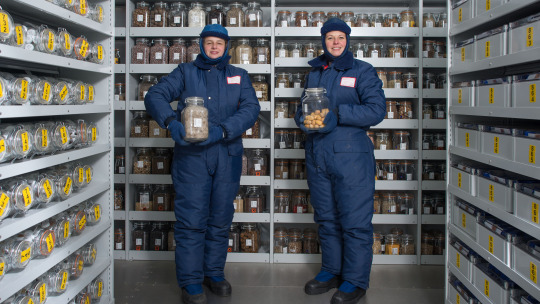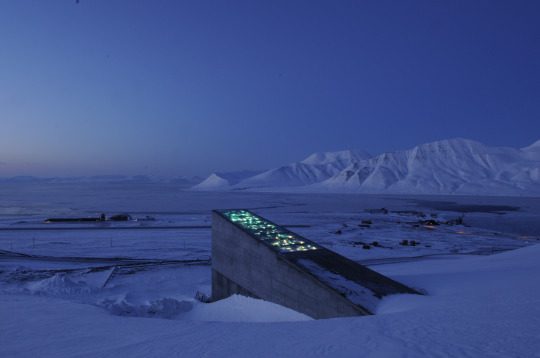Text
Seed banks built biodiversity even with environmental change
CLAREMONT, Calif. - With a changing climate causing outrageous weather patterns - like California's uncontrollable rapidly spreading fires and Arizona's unrelenting dry spell - certain species that have been on the termination list are being allowed a subsequent opportunity through seed banks.
In excess of 1,000 seed banks are situated across the globe, 20 of them in the US, attempting to protect delicate biological systems that are turning out to be less different as the planet warms. While specific banks just represent considerable authority in their local species, a few banks store seeds from everywhere the world.

California Botanic
The bank at the California Botanic Nursery in Claremont, which is protecting the qualities of in excess of 6,000 types of seeds, likewise has other living organic entities and participates in more extensive preservation endeavors, for example, vegetation planning and checking uncommon plants.
The work matters to the overseer of protection programs at California Botanic Nursery, Naomi Fraga, a botanist who spends significant time in plant preservation and floristics.
"Contemplating the eradication emergency and worldwide change, there is the potential that we can lose many plant populaces sooner rather than later," Fraga said. "What's more, truth be told we realize we have populaces in here that are really terminated in nature. Not entire species, but rather populaces that never again exist. Thus those materials address something totally indispensable."
Seeds are put away as a reinforcement strategy so various assortments inside an animal types are accessible some place on the planet and can be developed or once again introduced into the wild anytime.
"Each seed addresses an unmistakable hereditary individual," Fraga said. "Furthermore, they're for the most part little, so you can squeeze billions of hereditarily unmistakable people into a moderately little space and store enormous measures of hereditary variety."
"Presently in agribusiness, they're not simply zeroing in on the particular sorts of cultivars that are developed to create food, but on the other hand they're seed-banking crop wild family members," she said. "For example, the banana is a genuine illustration of a harvest that is going towards eradication, in view of a parasitic microorganism."
At the point when a parasitic illness contaminated the cherished Gros Michel banana and nearly cleared out the whole species during the 1950s, the business changed to another banana species, the Cavendish. Since bananas are developed from proliferation and are hereditary clones, there is a concern that Cavendish bananas will face the same outcome as Gros Michel.
"On the off chance that we're not support up the world's variety of bananas, there will be no bananas to eat from here on out," Fraga said. "So we can't simply zero in on the food that we devour now. We need to ponder their wild family members since that is the wellspring of future hereditary variety that individuals should pull from for us to do edit improvement."

Despite the fact that support up intriguing plants is significant, the objective among seed banks is assembling and safeguarding however much hereditary variety as could be expected. What's more, perhaps one day, whole environments.
Since banking seeds for biodiversity has just been drilled inside the beyond 100 years, how long seeds can be put away isn't completely perceived. In any case, researchers in all actuality do have a comprehension on why seeds answer various sorts of capacity, and they're making more revelations consistently.
Cheryl Birker is the seed preservation program supervisor at the California Botanic Nursery, described one incidental disclosure.
While putting a few assortments of seeds through chilly separation - an activity to fool seeds into sprouting - the cooler failed and the racks tumbled down, which combined the seeds as one.
Albeit the seeds weren't sprouting a long time before the mishap, the examples began to develop. Botanists found that this range of species lean toward having an actual unsettling influence.
"We'll do germination tests to attempt to get on the off chance that any of our (banked) species are biting the dust," Birker said, "and we would make arrangements either to remember, we could establish them in the nursery and make a second-age seed assortment or think of different means in the event that we're truly finding this species doesn't appear to live away by any stretch of the imagination. We'd need to think of another action, as perhaps having a living assortment in the nursery."
At times, researchers luck out and track down very much protected examples in nature. In 2012, researchers had the option to bring back Silene stenophylla on the grounds that antiquated Siberian squirrels had put away a few berries of the blossoming plant quite a while back. Since models like this exist in the wild, researchers are hopeful that seed banks will be a hindrance that gets biodiversity and makes food security.
To guarantee biodiversity is never lost, the California Botanic Nursery sends assortments of seeds to the Public Research center for Hereditary Assets Protection in Post Collins, Colorado. In spite of the fact that seed banks attempt to keep local seeds put away locally, the professional flowerbed shares their assortments to save seed tests in the event that flames, floods or different catastrophes strike.
History
The nursery has cooperated with not-for-benefit bunch California Plant Salvage and different associations to team up on protection endeavors, developments and test gathering.
Botanists take extraordinary measures to assemble seeds in the field, which can be deceptive. Regions are much of the time remote without any paths or streets, and unsound weather conditions can make conditions perilous. There's no assurance that the assortment will find success by the same token.
"Interesting plants are uncommon for an explanation," she said. "They could have regenerative issues, so we could get like 100 seeds one year. So that implies we really want to attempt once more in different years to attempt to get sufficient seed where we have an adequate assortment that we feel is illustrative of the populace."
Authorities would rather not upset the climate or cause more damage than great. That is the reason rules are set up to ensure that seed extraction is productive and feasible.
"We have broad conventions to streamline gathering the hereditary variety present at the site," Fraga said. "We're just gathering an example of plants, so we can't gather seeds from each and every person. Also, we just gather under 10% of the all out seed creation since we would rather not gather excessively and hurt the regular populace."
Land improvement for lodging and business interests likewise assumes a part in the deficiency of biodiversity in normal biological systems, which is the reason California has numerous limitations to assist species with making due. However, escape clauses in those assurances have placed further tension on currently delicate populaces.
Birker described the miserable truth behind Linanthus maculatus, an uncommon blossoming spice tracked down 10 years prior in Ocotillo, California, close to the boundary with Mexico.
"They found a populace in a space that was scheduled for far off improvement," she said, "but since it was a plant that had not been depicted at this point and not recorded on any uncommon plant list, they didn't need to stop their work. Thus they felt free to destroy and set up these colossal breeze turbines, and tragically, that undertaking was not exceptionally effective."
The breeze ranch has a grieved history, including a few turbine breakdowns - most as of late in September, as detailed by neighborhood occupants and media sources.
Albeit the California Botanic Nursery banked a couple of tests of Linanthus maculatus, its predicament gives a genuine illustration of the fact that horrible a wild plant population is so natural.
"We never know when future advances could come," Fraga said, "and how we could possibly figure out how to more readily reestablish populaces. At the point when you don't have anything, you don't have anything. Yet, to have the seeds and seed banks, it's some kind of insurance contract that those hereditary people are addressed some place, and can be possibly developed and presented eventually."
Seed banks all over the planet, what share data with each other, are acting to encourage biodiversity in normal biological systems. To captivate additional assistance from general society, some seed banks have chances to support assortments through gifts.
Interfacing with nearby seed banks is an incredible asset for anybody needing to assist with protecting organic variety.
"It simply adds to kind of the information gathering about existence and it adds to how we might interpret biodiversity," Fraga said. "We're supporting our wagers, thinking, consider the possibility that this large number of populaces go terminated.
0 notes